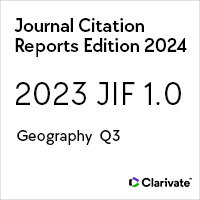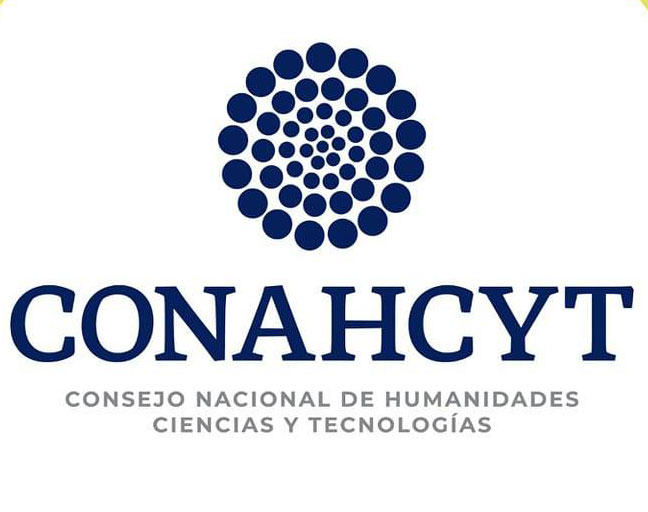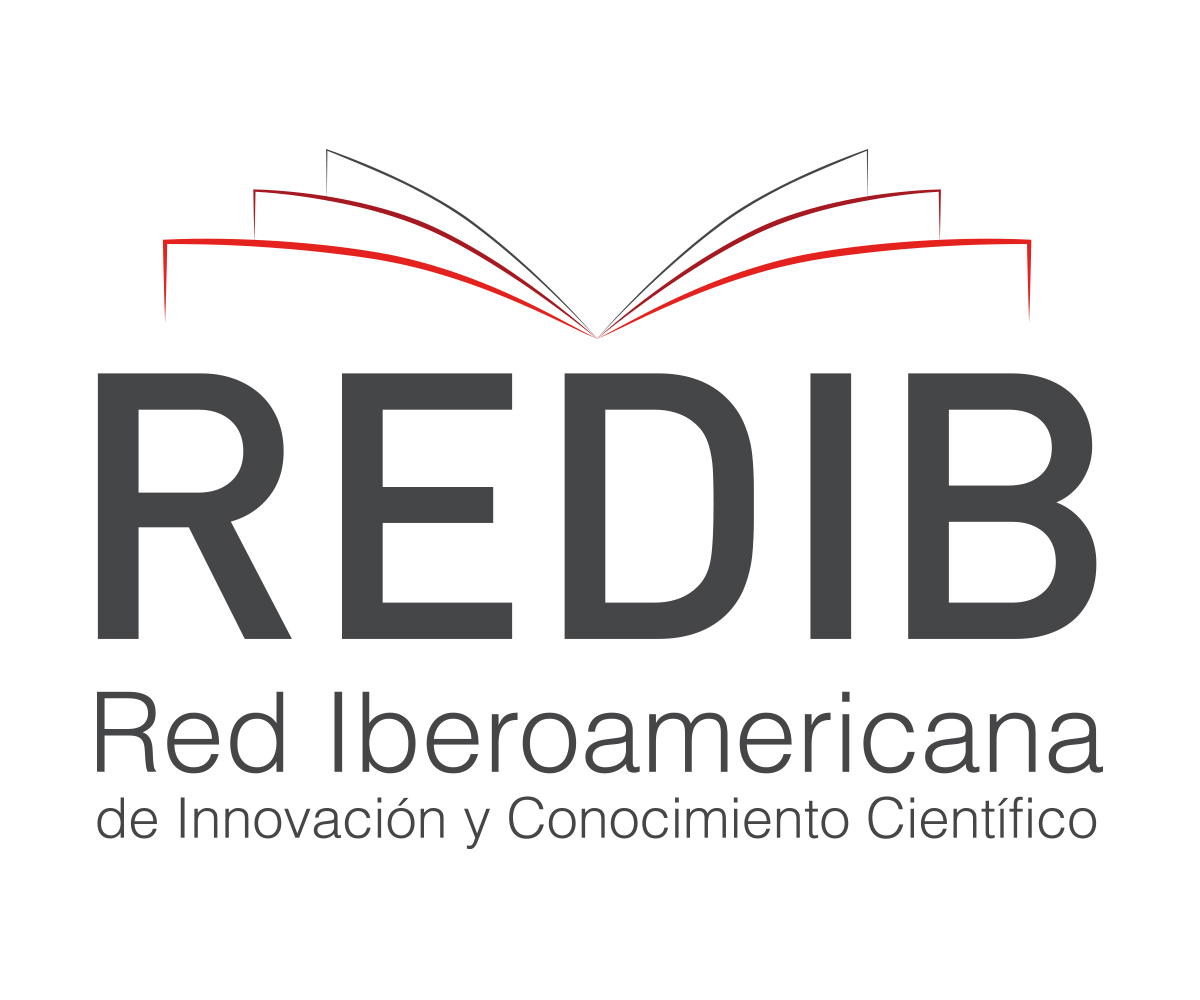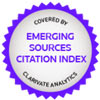La construcción de un eco-frente en la región fronteriza de la Selva Maya
Eco-frontier building in the Maya Forest borderlands
https://doi.org/10.21670/ref.2221105
Palabras clave:
frontera, frente, conservación, actores ecológicos, territorios, MesoaméricaResumen
El concepto de eco-frente analiza las acciones de actores ecológicos con la finalidad de considerar la manera en que contribuyen para transformar los territorios de alta biodiversidad. Los eco-frentes son apropiaciones espaciales y discursivas que evolucionan en etapas históricas. Este artículo analiza el caso de la Selva Maya como un eco-frente a partir de la década de 1970. La Selva Maya es un concepto construido por actores ecológicos para conservar selvas tropicales que cubre a la región fronteriza entre México, Guatemala y Belice. Se analizan materiales de primera mano que demuestran cómo la construcción del concepto ha transformado la región fronteriza en una eco-región paisajística para la conservación de selvas tropicales. Si bien, su apropiación de lo maya en su sentido científico y turístico refiere a la construcción de regiones fronterizas internacionales bioculturales, deja abierta la cuestión de derechos indígenas, su contexto multicultural, y de multiespecies.Abstract The concept of eco-frontier examines the actions of ecological actors to analyze the ways in which these contribute to transform biodiversity-rich territories. Eco-frontiers are discursive and spatial appropriations that evolve in different historical stages. This article analyzes the case of the Maya Forest as an emerging eco-frontier since the 1970s. The Maya Forest is a concept constructed by ecological actors to conserve tropical rainforest that covers the border region between Mexico, Guatemala, and Belize. Based on analysis of various first-hand materials, the article shows how the construction of the Maya Forest-concept has transformed the borderland into a scenic eco-region subject to tropical conservation. Simultaneously, the appropriation of the Maya in its scientific and touristic dimension suggests the construction of international biocultural borderlands. However, the issue of indigenous rights, multicultural context and that of multispecies remain subject to debate.
Citas
Adams, W. M. (2020). Geographies of conservation III: Nature’s spaces. Progress in Human Geography, 44(4), 789-801. https://doi.org/10.1177/0309132519837779 DOI: https://doi.org/10.1177/0309132519837779
Anderson, W. (2003). The nature of culture: environment and race in the colonial tropics. En P. Greenough & A. Lowenhaupt Tsing (Eds.), Nature in the Global South: environmental projects in South and Southeast Asia (pp. 29-46). Duke University Press. DOI: https://doi.org/10.2307/j.ctv1198tsr.5
Aquino Pires do Rio, G. & Name, L. (2017). Patrimonialización y gestión del territorio en la triple frontera de Brasil, Argentina y Paraguay: continuidades y desafíos del parque Iguazú. Revista de Geografía Norte Grande, (67), 167-182. https://doi.org/10.4067/S0718-34022017000200009 DOI: https://doi.org/10.4067/S0718-34022017000200009
Bengoa, J. (2000). La emergencia indígena en América Latina. FCE.
Boege, E. (2008). El patrimonio biocultural de los pueblos indígenas de México. Hacia la conservación in situ de la biodiversidad y agrodiversidad en los territorios indígenas. Instituto Nacional de Antropología e Historia/Comisión Nacional para el Desarrollo de los Pueblos Indígenas.
Boyer, C. R. (2015). Political landscapes. Forests, conservation, and community in Mexico. Duke University Press. DOI: https://doi.org/10.1515/9780822375876
Castillo Cocom, J., Rodriguez, T. & McCale, A. (2017). Ethnoexodus: escaping Mayaland. En B. J. Beyyette & L. J. LeCount (Eds.), “The only true people”. Linking Maya identities past and present (pp. 47-71). University Press of Colorado. DOI: https://doi.org/10.5876/9781607325673.c003
Corlett, R. & Primack, R. (2008). Tropical rainforest conservation: A global perspective. En W. Carson & S. Schnitzer (Eds.), Tropical forest community ecology (pp. 442-457). Blackwell Publishing.
Crespo, C. (2005). “Qué pertenece a quién”: Procesos de patrimonialización y Pueblos Originarios en Patagonia. Cuadernos de Antropología Social, (21), 133-149. http://revistascientificas.filo.uba.ar/index.php/CAS/article/view/4472/3972
De la Torre, J. A., Camacho, G., Arroyo-Gerala, P., Cassaigne, I., Rivero, M. & Campos-Arceiz, A. (2021). A cost-effective approach to mitigate conflict between ranchers and large predators: a case study with jaguars in the Mayan forest. Biological Conservation, 256. https://doi.org/10.1016/j.biocon.2021.109066 DOI: https://doi.org/10.1016/j.biocon.2021.109066
De Sartre, X. A., Berdoulay, V. & Da Silva Lopes, R. (2012). Eco-frontier and place-making: the unexpected transformation of a sustainable settlement project in the Amazon. Geopolitics, 17(3), 578-606. https://doi.org/10.1080/14650045.2011.631199 DOI: https://doi.org/10.1080/14650045.2011.631199
De Vos, J. (2002). Una tierra para sembrar sueños: Historia reciente de la Selva Lacandona 1950-2000. CIESAS/FCE.
Dove, M. R. & Carpenter, C. (Eds.). (2008). Environmental anthropology: A historical reader. Blackwell.
Duffy, R. (2000). Shadow players: Ecotourism development, corruption and state politics in Belize. Third World Quarterly, 21(3), 549-565. https://www.jstor.org/stable/3993338 DOI: https://doi.org/10.1080/713701038
El Colegio de la Frontera Sur (Ecosur). (1995). Protected areas and archaeological sites-Mapping and database development to support conservation planning in the Selva Maya tri-national region [Archivos, bases de datos y mapas Selva Maya]. Ecosur.
Fábregas, A., Pohlenz, J., Báez, M. & Macías, G. (1985). La formación histórica de la Frontera Sur, México. CIESAS-Sureste/Cuadernos de la Casa Chata.
Fedick, S. (2003). In search of the Maya Forest. En C. Slater (Ed.), In search of the rain forest (pp. 133-164). Duke University Press. DOI: https://doi.org/10.1215/9780822385271-005
Finley-Brook, M. (2007). Green neoliberal space: the Mesoamerican biological corridor. Journal of Latin American Geography, 6(1), 101-124. https://www.jstor.org/stable/25765160 DOI: https://doi.org/10.1353/lag.2007.0000
Ford, A. & Nigh, R. (2015). The Maya forest garden: Eight millennia of sustainable cultivation of the tropical woodlands. Routledge. DOI: https://doi.org/10.4324/9781315417936
Freitas, F. (2017). Ordering the borderland: settlement and removal in the Iguaçu National Park, Brazil, 1940s-1970s. En W. G. von Hardenberg, M. Kelly, C. Leal & E. Wakild (Eds.), The nature state: Rethinking the history of conservation (pp. 174-191). Routledge.
Galán, F., Ramos, D. & Díaz, M. (En prensa). Grupos indígenas, diversidad cultural y ubicación en la ruta del Tren Maya. En M. A. Díaz Perera (Coord.), Tren Maya. El Colegio de la Frontera Sur.
Gundermann, H. (2001). El método de los estudios de caso. En M. L. Tarrés (Coord.), Observar, escuchar y comprender sobre la tradición cualitativa en la investigación social (pp. 249-288). Colmex/Flacso.
Guyot, S. (2011). The eco-frontier paradigm: rethinking the links between space, nature and politics. Geopolitics, 16(3), 675-706. https://doi.org/10.1080/14650045.2010.538878 DOI: https://doi.org/10.1080/14650045.2010.538878
Guyot, S. & Dellier, J. (Eds.). (2009). Rethinking the Wild Coast, South Africa. Eco-frontiers vs livelihoods in Pondoland. Verlag.
Hervik, P. (1999). The mysterious Maya of National Geographic. Journal of Latin American Anthropology, 4(1), 166-197. http://dx.doi.org/10.1525/jlca.1998.4.1.166 DOI: https://doi.org/10.1525/jlat.1998.4.1.166
Instituto Nacional de Estadística y Geografía. (2016). Conjunto de datos vectoriales de Uso del suelo y vegetación. Escala 1:250 000. Serie VI. Capa Unión. Inegi. https://www.inegi.org.mx/app/biblioteca/ficha.html?upc=889463173359
Kauffer, E., Laako, H., Pliego, E., Fuentes, J., Cervantes, M., Mesa, A., Ramos, D., Urbina, M., Díaz, M., Andrade, D., Barrios, M., Barrios, A., Álvarez, J., Pardo, P., García, L., Chaulón, M., Castañeda, J., Monroy, D. & Castillo, R. (2019). Las fronteras de la cuenca del río Usumacinta. Reporte final de investigación para el proyecto FORDECyT-Usumacinta: Cambio global y sustentabilidad en la cuenca del río Usumacinta y zona marina de influencia. Bases para la adaptación al cambio climático desde la ciencia y la gestión del territorio (documento de trabajo núm. 273646). Conacyt.
Klier, G., Casalderrey, C., Busan, T. E. & Di Pasquo, F. (2017). Conservación de la biodiversidad y sus vínculos utilitaristas: cercanías y distancias con Peter Singer y Gifford Pinchot. Revista Metropolitana de Sustentabilidade, 7(3), 63-82. https://ri.conicet.gov.ar/bitstream/handle/11336/60317/CONICET_Digital_Nro.dbd71226-5ddd-4de0-b0ea-6093986e6459_A.pdf?isAllowed=y&sequence=2
Laako, H. (2016). Decolonizing vision on borderlands: the Mexican southern borderlands in critical review. Globalizations, 13(2), 173-187. https://doi.org/10.1080/14747731.2015.1076986 DOI: https://doi.org/10.1080/14747731.2015.1076986
Laako, H. & Kauffer, E. (2021). Conservation in the frontier: negotiating ownerships of nature at the Mexican southern border. Journal of Latin American Geography, 20(3), 40-69. http://doi.org/10.1353/lag.2021.0049 DOI: https://doi.org/10.1353/lag.2021.0049
Laako, H. & Kauffer, E. (2022). Between colonising waters and extracting forest fronts: entangled eco-frontiers in the Usumacinta River Basin. Political Geography, 96, Artículo 102566. https://doi.org/10.1016/j.polgeo.2021.102566 DOI: https://doi.org/10.1016/j.polgeo.2021.102566
Laako, H., Pliego Alvarado, E., Ramos Muñoz, D. & Marquez, B. (2022). Transboundary conservation and nature states in the Maya Forest: international relations, challenged. Globalizations. https://doi.org/10.1080/14747731.2022.2062844 DOI: https://doi.org/10.1080/14747731.2022.2062844
Laako, H., Pliego Alvarado, E., Ramos Muñoz, D., Marquez, B., Wakild, E., Lehtinen, A. & Castro, E. (2022). The guardians of the Maya Forest. Versus. https://www.versuslehti.fi/tiededebatti/the-guardians-of-the-maya-forest/
Legorreta Diaz, M., Márquez Rosano, C. & Trench, T. (2014). Paradojas de las tierras protegidas en Chiapas. UNAM/Centro Regional de Investigaciones Multidisciplinarias/Universidad Autónoma Chapingo/Centro de Investigaciones Interdisciplinarias en Ciencias y Humanidades.
Leyva Solano, X. & Ascencio Franco, G. (1997). Colonización, cultura y sociedad. Unicach.
Lowenhaupt Tsing, A. (2015). The mushroom at the end of the world: on the possibility of life in capitalist ruins. Princeton University Press. DOI: https://doi.org/10.1515/9781400873548
Marchese, C. (2015). Biodiversity hotspots: a shortcut for a more complicated concept. Global Ecology and Conservation, 3, 297-309. https://doi.org/10.1016/j.gecco.2014.12.008 DOI: https://doi.org/10.1016/j.gecco.2014.12.008
Martínez-Reyes, J. E. (2016). Moral ecology of a forest: The nature industry and maya post-conservation. The University of Arizona Press. https://openresearchlibrary.org/viewer/b6a915de-e0f8-46c7-ae7e-5ab9354c68d1
Martos López, L. A. (2010). Definiendo lo maya. Fundación Cultural Armella Spitalier.
McAnany, P. (2020). Imagining a Maya Archaeology that is anthropological and attuned to indigenous cultural heritage. Heritage, 3(2), 318-330. https://doi.org/10.3390/heritage3020019 DOI: https://doi.org/10.3390/heritage3020019
Meave, J. A., Gallardo-Cruz, J. A., Méndez Hernández, C. A., Martínez-Camilo, R., Véliz Pérez, M. E. & Carabias, J. (Coords.). (2021). Tipos de vegetación de la cuenca del río Usumacinta. Universidad Iberoamericana.
Mejía-Ortiz, L. M., Sprouse, P., Tejeda-Mazariegos, J. C., Valladarez, J., Frausto-Martínez, O., Collantes-Chávez-Costa, A. L., Ruíz-Cancino, G. & Yáñez, G. (2021). Tropical subterranean ecosystems in Mexico, Guatemala and Belize: a review of aquatic biodiversity and their ecological aspects. En L. Hufnagel (Ed.), Natural History and Ecology of Mexico and Central America. IntechOpen. https://doi.org/10.5772/intechopen.97694 DOI: https://doi.org/10.5772/intechopen.97694
Mendoza, M., Fletcher, R., Holmes, G., Ogden, L. A. & Schaeffer, C. (2017, junio). The Patagonian imaginary: natural resources and global capitalism at the far end of the world. Journal of Latin American Geography, 16(2), 93-116. https://www.jstor.org/stable/44861333 DOI: https://doi.org/10.1353/lag.2017.0023
Miller, S. W. (2007). An environmental History of Latin America. Cambridge University Press. DOI: https://doi.org/10.1017/CBO9780511800672
Ministerio de Agricultura, Ganadería y Alimentación & Unidad de Planificación Geográfica y Gestión de Riesgo. (2006). Mapa de cobertura vegetal y uso de la tierra, 1:50000, República de Guatemala. https://ideg.segeplan.gob.gt/geoportal/
Ministerio de Medio Ambiente y Recursos Naturales. (2011). Catálogo: mapa nacional de riesgo ambiental. En el marco del Plan Nacional de Prevención y Contingencia Ambiental. MARN. https://cidoc.marn.gob.sv/documentos/catalogo-mapa-nacional-de-riesgo-ambiental-en-el-marco-del-plan-nacional-de-prevencion-y-contingencia-ambiental/
Nations, J. D. (2006). The Maya tropical forest: people, parks, and ancient cities. University of Texas Press. DOI: https://doi.org/10.7560/712829
rtega-Rubio, A., Pinkus-Rendón, M. J. & Espitia-Moreno, I. C. (Eds.). (2015). Las áreas naturales protegidas y la investigación científica en México. Centro de Investigaciones Biológicas del Noroeste/Universidad Autónoma de Yucatán/Universidad Michoacana de San Nicolás de Hidalgo. https://cobi.org.mx/wp-content/uploads/2016/01/2015_LIBRO-Las-%C3%A1reas-naturales-protegidas-y-la-investigaci%C3%B3n-cient%C3%ADfica-en-M%C3%A9xico.pdf
Oviedo, G., Maffi, L. & Larsen, P. B. (2000). Indigenous and traditional peoples of the world and ecoregion conservation. An integrated approach to conserving the world’s biological and cultural diversity. WWF International/Terralingua.
Primack, R. B., Bray, D., Galletti, H. A. & Ponciano, I. (1998). Timber, tourists, and temples: Conservation and development in the Maya Forest of Belize, Guatemala, and Mexico. Island Press.
Ramutsindela, M., Guyot, S., Boillat, S., Giraut, F. & Bottazzi, P. (2020). The geopolitics of protected areas. Geopolitics, 25(1), 240-266. https://doi.org/10.1080/14650045.2019.1690413 DOI: https://doi.org/10.1080/14650045.2019.1690413
Sarukhan, J., Koleff, P., Carabias, J., Soberón, J., Dirzo, R., Llorente-Bousquets, J., Halffter, G., González, R., March, I., Mohar, A., Anta, S. & de la Maza, J. (2009). Capital natural de México. Síntesis: Conocimiento actual, evaluación y perspectivas de sustentabilidad. Conabio. http://centro.paot.org.mx/documentos/conabio/capital_natural.pdf DOI: https://doi.org/10.5962/bhl.title.112130
Simonian, L. (1995). Defending the land of the jaguar: A history of conservation in Mexico. University of Texas Press. DOI: https://doi.org/10.7560/776906
Stevens, S. (Ed.). (2014). Indigenous peoples, national parks, and protected areas: A new paradigm linking conservation, culture, and rights. The University of Arizona Press.
Toledo, V. M. & Barrera-Bassols, N. (2009). La memoria biocultural. La importancia ecológica de las sabidurías tradicionales. Icaria.
Tudela, F. (Coord.). (1992). La modernización forzada del trópico: El caso de Tabasco. Proyecto integrado del Golfo (1a. reimp.). Centro de Investigación y de Estudios Avanzados del Instituto Politécnico Nacional/Federación Internacional de Institutos de Estudios Avanzados/Instituto de Investigaciones de las Naciones Unidas para el Desarrollo Social/El Colegio de México, A. C.
United Nations Educational, Scientific and Cultural Organization (UNESCO). (2020). Biosphere Reserves in Latin America and the Caribbean. https://en.unesco.org/biosphere/lac
Wakild, E. (2017). Protecting Patagonia: science, conservation and the pre-history of the nature state on a South American frontier 1903-1934. En W. G. Von Hardenberg, M. Kelly, C. Leal & E. Wakild (Eds.), The nature state: rethinking the history of conservation (pp. 37-54). Routledge. DOI: https://doi.org/10.4324/9781315195636-3
Wildlife Conservation Society. (2022, 17 de septiembre). Selva Maya: La lucha por su existencia. [Video] Youtube. https://www.youtube.com/watch?v=0fJk_fFY-rE
Ybarra, M. (2018). Green wars. Conservation and decolonization in the Maya Forest. University of California Press. DOI: https://doi.org/10.1525/9780520968035
































